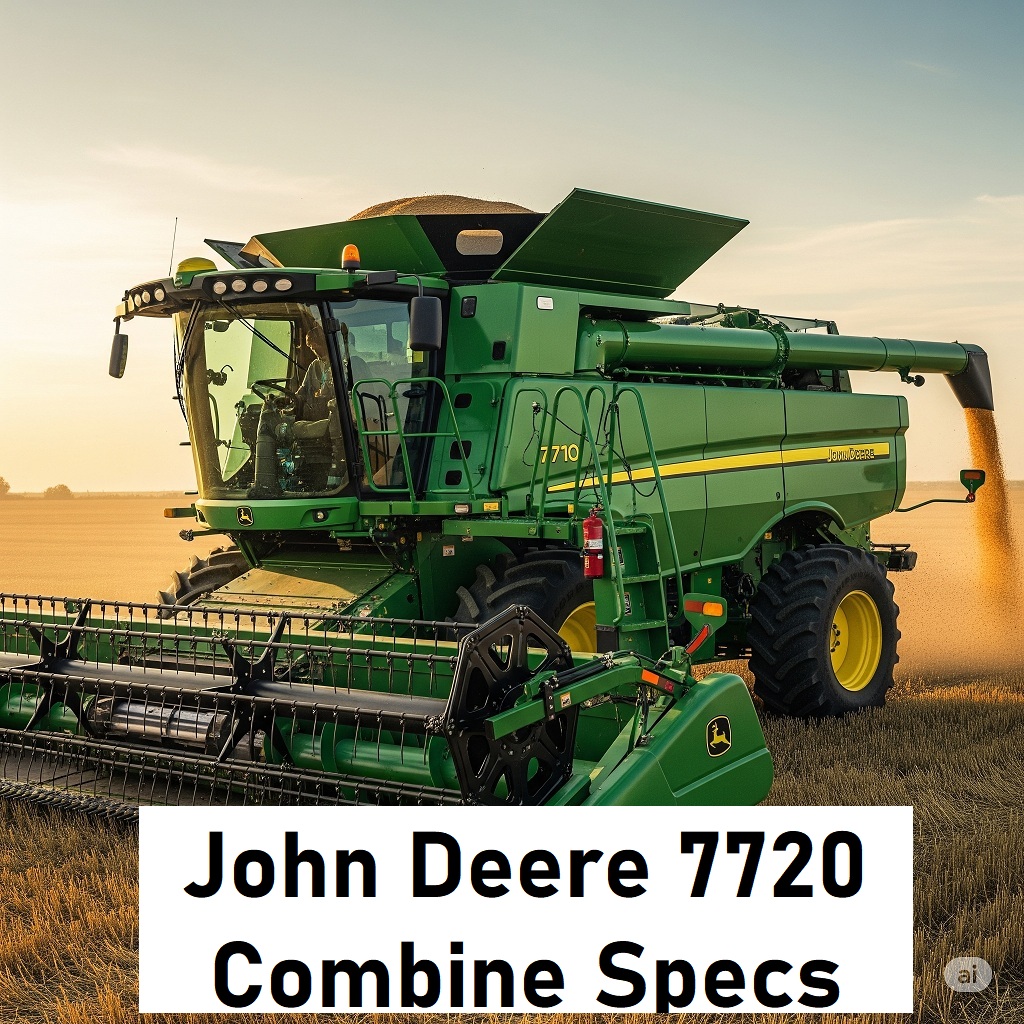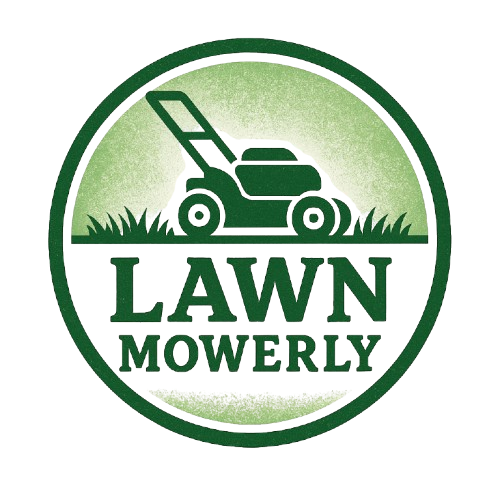
Below is a comprehensive 1,000+ word article detailing the specifications, notable parts, horsepower, price range, weight, and other related data for the John Deere 7720 combine.
John Deere 7720 Combine: Specifications, Parts, Horsepower, Price, and Weigh
The John Deere 7720 Titan II is one of the most iconic combines produced during its time, designed to serve medium-to-large farms. Its durability and capacity have kept it working in fields even decades after its launch. However, as with any vintage agricultural machinery, understanding its technical specifications, parts, and performance is critical for buyers, owners, or those considering upgrades.
Overview
The John Deere 7720 was introduced in the late 1970s and continued production with subsequent refinements such as the Titan II models in the 1980s. It was built as a medium-to-large capacity combine to handle a variety of crops, including corn, soybeans, and small grains.
Specifications
Below are some key specifications for the John Deere 7720:
Engine:
- Horsepower: The 7720 is powered by a John Deere 466 ci turbocharged diesel engine with approximately 165 HP on early models and close to 180 HP on Titan II versions. This power ensures ample performance for threshing and harvesting.
- Engine Type: Inline 6-cylinder, turbocharged diesel.
- Fuel Capacity: 100 gallons, allowing for long operational hours in the field.
Threshing and Harvesting Capacity:
- Threshing Cylinder Width: Around 44 inches, designed to manage large crop volumes.
- Threshing Cylinder Diameter: 22 inches.
- Separation Area: Features 2-stage separation with significant cleaning shoe and sieve capacity for high-volume harvests.
- Grain Tank Capacity: Approximately 200 bushels in the standard tank; extensions can increase this to around 300 bushels.
- Unloading Auger: Capable of unloading grain at approximately 2 bushels per second.
Dimensions and Weight:
- Weight: The John Deere 7720 weighs approximately 21,000 to 22,000 pounds without the header. With the header included, weight increases based on header type and size.
- Height: 12.6 feet with extensions folded down.
- Width: Varies depending on tires but typically fits within an average field row width.
- Length: Around 24 feet.
- Tire Options: Can be outfitted with various tire configurations based on field and crop needs.
Headers and Attachments:
- Compatible with a wide range of John Deere headers, including:
- Grain Platforms: 16 to 24 feet widths.
- Corn Heads: 6-row or 8-row configurations.
Parts Overview
The John Deere 7720 combines robust engineering with replaceable parts that can extend its service life for decades. However, ongoing maintenance often requires familiarity with commonly replaced components. Here’s an overview of critical parts:
1. Bearings and Belts
- Bearings and belts are fundamental for smooth operation in the separator system, grain elevator, and thresher components. These should be inspected regularly during harvest seasons.
2. Grain Elevator Components
- Paddles and chains in the grain elevator see heavy use and are prone to wear. Frequent replacements ensure efficient grain transport.
3. Hydraulic System
- Hydraulic pumps, fluid lines, and cylinders control major adjustments like header height and unloading mechanisms. Keeping these components in good shape ensures efficient operation.
4. Filters
- Air, fuel, and hydraulic filters are critical for maintaining engine health and reliable system performance. Availability of aftermarket filters makes these an affordable part to replace annually.
5. Electrical and Lighting System
- The control panel and wiring harnesses may degrade over time, especially in older machines exposed to dust and moisture. Upgrades to LED lights are popular for modern visibility.
6. Headers
- Swapping between grain and corn headers is a common practice. Ensuring augers, sickle knives, and reel assemblies are sharp and aligned is vital for smooth cutting.
Horsepower
- The John Deere 7720’s 165-180 HP makes it a powerful combine for its era. It is well-suited for medium-to-large farming operations running crops like corn, wheat, and soybeans.
- The engine’s efficiency ensures it can handle tough field conditions while remaining economical compared to smaller or larger machines.
Weight
- The 21,000–22,000 lbs weight of the John Deere 7720 is spread over its large tires, providing stability for different types of terrain. However, this weight makes frequent maintenance of bearings and axles important for keeping it field-ready, especially during heavy harvests.
Price Range
As a vintage combine, the price of the John Deere 7720 varies widely depending on model year, condition, hours of use, and included features or headers.
- Used Combine Price: Expect prices for used 7720 models to range from $10,000 to $30,000 in the current market.
- Units in good condition, with built-in header extensions and fewer operational hours, will be priced on the higher end.
- Machines requiring significant repairs or missing attachments may cost less but could require more investment in parts.
- Header Costs:
- Grain Headers: Start at $2,000 for smaller models or used equipment.
- Corn Heads: Range between $2,500 and $6,000 based on row configuration.
Notable Features
Here’s why the John Deere 7720 Titan II remains a sought-after combine even decades after production ended:
- Solid Build Quality: With a robust frame and simple engineering, these combines are easy to repair and can handle long operational hours.
- Versatility: Ability to switch between grain, corn, and small seed crops makes it suited for diverse farming operations.
- Aftermarket Support: Many companies and salvage yards offer compatible parts, allowing owners to save on expensive repairs.
- Ease of Maintenance: Features like easy-to-access engine bays and lubrication points reduce complexity for operators.
Drawbacks and Considerations
While the John Deere 7720 is legendary for its reliability, potential buyers should consider:
- Age and Wear: As a decades-old machine, parts such as belts, bearings, and wiring may be prone to failure.
- Fuel Efficiency: While reasonably efficient for its size, fuel consumption is higher than modern combines due to older engine technology.
- Technology Limitations: Unlike newer models, the 7720 lacks features like advanced yield monitors, GPS-compatible systems, or self-leveling sieves.
- Parts Scarcity: Some original parts are hard to find, though aftermarket options can fill the gap.
John Deere 7720 Combine: Common Problems and Solutions
The John Deere 7720 Titan II combine, a workhorse from the late 20th century, is still widely used due to its durability and field performance. However, as a vintage machine, it comes with unique challenges. In this article, we’ll discuss the most frequent problems owners face and offer practical solutions.
1. Fuel System Issues
Problem: One of the most common complaints involves inconsistent engine performance, stalling, or total shutdown during operation. This is typically caused by fuel flow problems, air infiltration, or debris buildup in tanks and filters.
Root Causes:
- Clogged fuel filters or in-tank screens
- Vacuum leaks or air in the fuel system
- Deteriorated rubber fuel lines
Solutions:
- Replace fuel filters every season, ensuring cartridges are free of blockages. Clean in-tank screens thoroughly.
- Inspect and replace rubber hoses to prevent internal deterioration that can cause blockages.
- Test for air leaks using a clear fuel line and a pressure gauge on the system.
- Address tank sediment or residue by flushing and rinsing the tank during offseason maintenance.
2. Excessive Bearing Wear
Problem: Early failure of bearings in key areas like the grain elevator, separator, and feederhouse.
Root Causes:
- Aging seals and grease fittings lead to poor lubrication.
- Overloaded threshing or sieving systems wear out bearings prematurely.
Solutions:
- Implement a rigorous greasing schedule, ensuring all lubrication points get attention daily during harvest.
- Monitor for early signs of bearing heat and wear, such as noise or abnormal vibrations.
- Use high-quality aftermarket bearings or upgrade to newer materials if you encounter frequent failures.
3. Electrical Faults
Problem: Intermittent electrical issues, such as trouble starting, malfunctioning lights, or dead shorts.
Root Causes:
- Corroded or loose electrical connections
- Worn wiring harnesses in critical areas like the control panel or engine compartment
Solutions:
- Inspect, clean, and tighten all electrical terminals before the season begins.
- Replace damaged or unstable wiring promptly.
- Focus on the combine’s alternator and starter wiring for early corrosion.
4. Grain Elevator Blockages
Problem: Build-up and jamming of the grain elevator system, a common frustration in high-yielding conditions.
Root Causes:
- Worn elevator paddles lose effectiveness, letting debris accumulate.
- Insufficient clearance causes compacting of grain debris.
Solutions:
- Check and replace elevator paddles annually, prioritizing high-quality or aftermarket options.
- Confirm the tension and alignment of elevator chains to avoid jamming.
- Adjust clearances to allow free movement of material.
5. Hydraulic System Failures
Problem: Slow response in key hydraulic functions, such as unloading augers or header height adjustments.
Root Causes:
- Contaminated hydraulic fluid or worn hoses
- Internal pump wear or failing seals
Solutions:
- Change hydraulic oil at least every 1,000 hours or once per season.
- Flush the hydraulic reservoir and replace filters as recommended.
- Check hydraulic lines for leaks or damage and replace them with higher pressure-rated options.
6. Separator and Thresher Problems
Problem: Difficulty maintaining performance when threshing heavy straw or tough crops.
Root Causes:
- Threshing elements become dull or improperly adjusted over time.
- Loss of separator capacity during extended operation.
Solutions:
- Sharpen or replace cylinder bars, concaves, and rasp bars yearly.
- Adjust concave clearance and rotor speeds to suit crop conditions.
- Clean components to prevent residue build-up from hindering performance.
7. Fuel Pump Reliability
Problem: Frequent fuel pump failures lead to delays and reduced reliability.
Root Causes:
- Aging mechanical or electric fuel pumps
- Debris damage resulting from insufficient filtration
Solutions:
- Upgrade to a high-quality replacement pump, consulting manufacturers for compatible aftermarket options.
- Fix return line issues like blockages in regulating valves and fuel pressure loss.
- Install a pre-filter to help extend the service life of both the fuel pump and injectors.
8. Cleaning Shoe Overloads
Problem: Uneven cleaning shoe performance during challenging harvesting conditions.
Root Causes:
- Improperly aligned sieves or damaged fan blades
- Insufficient air distribution to blow away light chaff
Solutions:
- Perform routine checks for sieve and fan misalignment.
- Replace or repair bent blades and worn drive components.
- Calibrate air flow and test in varying field conditions.
9. Component Scarcity with Aging Machines
Problem: As a 40-year-old machine, finding original parts can be difficult, leading to downtime.
Solutions:
- Source parts from trusted aftermarket suppliers specializing in legacy John Deere models.
- Salvage yards and local tractor dealers often have older parts in stock.
- Join combine forums or communities for shared advice on sourcing parts and compatible substitutes.
Proactive Maintenance Tips
To keep your John Deere 7720 Titan II running reliably, consider adopting the following maintenance practices:
- Preseason Inspection: Check belts, bearings, and critical systems for wear or damage.
- Lubrication: Grease all moving joints daily while in use.
- Fluid Checks: Monitor engine oil, hydraulic fluid, and coolant daily.
- Offseason Storage: Store the combine in a dry, clean barn and consider draining fluids to reduce degradation risks.
Conclusion
The John Deere 7720 Titan II remains a reliable and powerful combine for medium-to-large farming operations. Its strong build quality, versatile header options, and reasonably priced parts make it a viable choice for farmers who prefer vintage machinery or have smaller investment budgets. However, it requires regular maintenance to address aging components like belts, bearings, and fuel systems.
If you’re considering purchasing or currently operating a 7720, investing time in preventive maintenance and sourcing aftermarket parts can ensure this vintage workhorse keeps performing optimally.

I’m David man behind Lawn Mowerly; I’ve been dealing with lawnmowers and Tractors with my father since I was a kid. I know every make and model and what each one is capable of and love helping people find the perfect equipment for their needs.
